Brian L. Frye & Primavera de Filippi
Do NFTs make copyright obsolete? A debate between two legal scholars and artists.
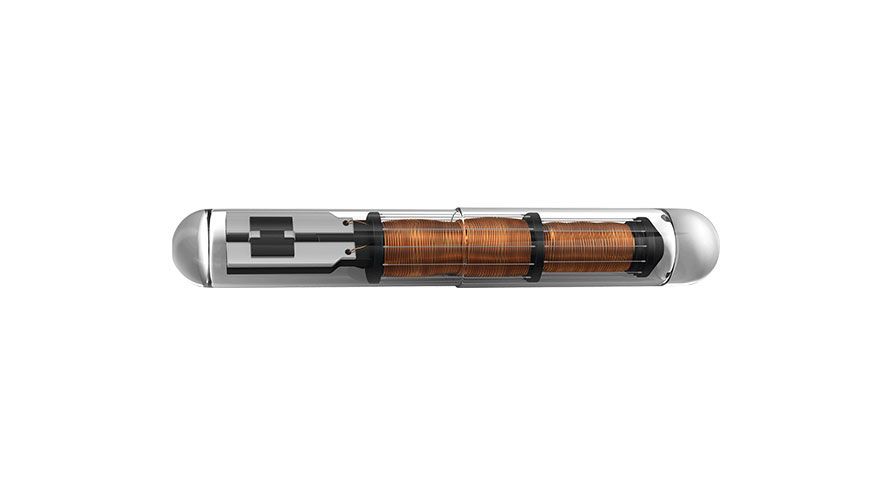
What does it mean to put a body on the blockchain? Lans King and One of the Many Matts have both explored this question through artworks that involve microchips implanted in their hands. King’s chip functions as a tag that registers him on the blockchain and connects him to his artistic output. (Network of) Self (2019–) addresses concepts of identity and authenticity, and how they operate in the construction of the value of an artist’s work. For One of the Many Matts, the chip’s purpose has more to do with distribution than with recordkeeping. People who meet him can put their phone to his hand and acquire an NFT as a memento of the encounter. The tokens, titled The Many Matts (2021), are as rare as these meetings, which bring an embodied dimension to the question of scarcity and how it creates meaning and value for digital assets. In a conversation organized by Outland, the two artists compared notes on their implant experiences. They also shared their ambivalent views on the increasing acceptance of biohacking, and drew some connections between twentieth-century conceptual artworks and their own practices of archiving and tracking.
LANS KING My implant was done by a biohacker named Jowan Österlund. He had a company called Biohax in Helsingborg, Sweden. I discovered him through an online search. He’s probably done more microchip implants than anyone else—about five thousand, I believe. He was doing them everywhere, even at festivals. In Sweden microchip implants are probably more common than in any other country. I flew from London to Helsingborg to meet with him on a Saturday afternoon. It was a pretty smooth process. It was very easy to do, although it did hurt. He found my project really interesting, so he didn’t even charge me for it. Since then we’ve become friends and we’re working on some other things together.
ONE OF THE MANY MATTS That number—five thousand—is crazy. Sometimes I try to estimate how many people have chips in them. It has to be around twenty thousand. What’s your sense?
KING That seems about right to me. Jowan has done implants for companies that use them to grant employees access to high-security rooms and systems. Some people in Sweden use them for transport cards and things like that.
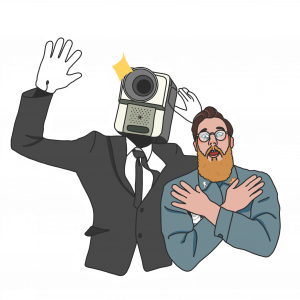
OOTMM People are using them for payments as well, now that we’re getting universal credit card payments in a chip.
KING Someone I know joked that “cyborg” sounds Swedish; they seem to embrace it.
OOTMM My experience was very similar to yours. People ask me how I got it installed, whether I did it myself. And I say no, because of course there’s a guy in Bushwick who does it. And it’s much more casual than I thought it would be, especially with the injector-based method.
I also have a separate chip in the knife edge of my left hand. That wasn’t injected, the skin layers were sliced and then pushed apart with the blunt end of a scalpel. That was really awkward, but still relatively trivial compared to other pains in my life. People ask about rejections, but chips are entry-level biohacking. They don’t interface with the body. They don’t talk to me in any way. My body ignores the chips, and the chips ignore my body.
KING When did you do yours?
OOTMM The first one I did was injector-based, in 2017. The second, incision-based one was in 2020. I launched the project that used that chip in early 2021.
KING What’s the difference between the two of them? How are you using them?
OOTMM One is just an NFC [near-field communication], which lets me talk to phones. And then the other one, which I use for this project, is the NExT. That has the RFID [radio-frequency identification] as well, which I’ve keyed to my friends’ apartment so I can just stroll onto their rooftop whenever.
KING The main function of my implant is to tag me. The project started out as a very simple idea called This is My Body (of Work). My idea was that the code on the microchip would be connected to all my work. I use ASCII code in my paintings, so I figured I would embed the blockchain code as well in all my work. The title plays with the idea of the artist’s connection to their work. It’s also a bit like what Jesus said at the Last Supper. There’s an element of sacrifice: I’m using myself as a test case so that other people can see the effects.
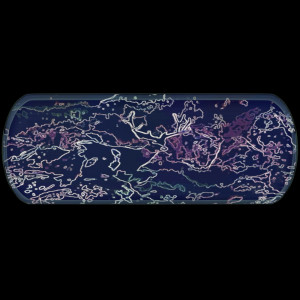
The project goes back my desire to examine the relationship between art and finance. Can a person be a stock? Can we invest in a person as we would a startup? If you thought someone was going to be very successful, could you fractionalize them? I wanted to create a stock as a work of art. Then I discovered that Duchamp did it a hundred years before.
In 2017 I heard about the ICO craze and thought it could be interesting to fractionalize oneself using this new technology. Then I learned that Kevin Abosch was doing that with IAMA Coin, and Sarah Meyohas had Bitchcoin. In the process I met someone who was moving from the finance world to the art world, Jess Houlgrave, and she co-founded Codex Protocol, which is a blockchain-based registry of artworks. My friend had a dog with a microchip implant, which was common in France, and I said: “Is that available for humans?” So I decided to register myself on the blockchain using an implant. And then the project grew in many different directions. What was the impetus for you?
OOTMM When I first got it in 2017, I didn’t really plan much—the first thing I did was put my Dogecoin address on the chip so someone could tap me and pull up a little interface to pay me Doge. In 2018 I asked how I could connect this to NFTs. I was thinking about scarcity and meaning—in the real world, the value of a thing is ostensibly derived from what it’s made of, or from the processes required to make it. But that all gets thrown out the window in the digital realm where everything is infinitely reproducible. So how do you actually craft meaning around a digital object? I wanted to do it by connecting the token to a scarce experience. You have to meet me—that’s what gives it meaning.
KING My background is in cognitive science. I studied some AI and human-machine interaction. When I got out of school the internet was booming. I got involved in digital agencies and startups, and became a digital strategist working primarily with brands in luxury and finance and media. I left all that around 2014 to focus on art. From the beginning, my works were part digital, part hand-painted. Bitcoin was starting to take root then, but it wasn’t until 2017 that I started looking at it very seriously. I got involved with NFTs by talking about the microchip project to Tyler Winklevoss, who invited me to make some NFTs and do a drop on Nifty Gateway.
OOTMM I got involved as a programmer. I was collaborating on the standards for ERC-721 and ERC-1155. Only later did I think about how I could use all this for something interesting. The blockchain really does lend itself to exploring the intersection of art and finance. Some of my favorite pieces are the ones that play with that, like Neolastics (2020) by Simon de la Rouviere.
KING Yes, it’s a great meeting place of art, finance, and tech, which are three things that have always been in my sphere.
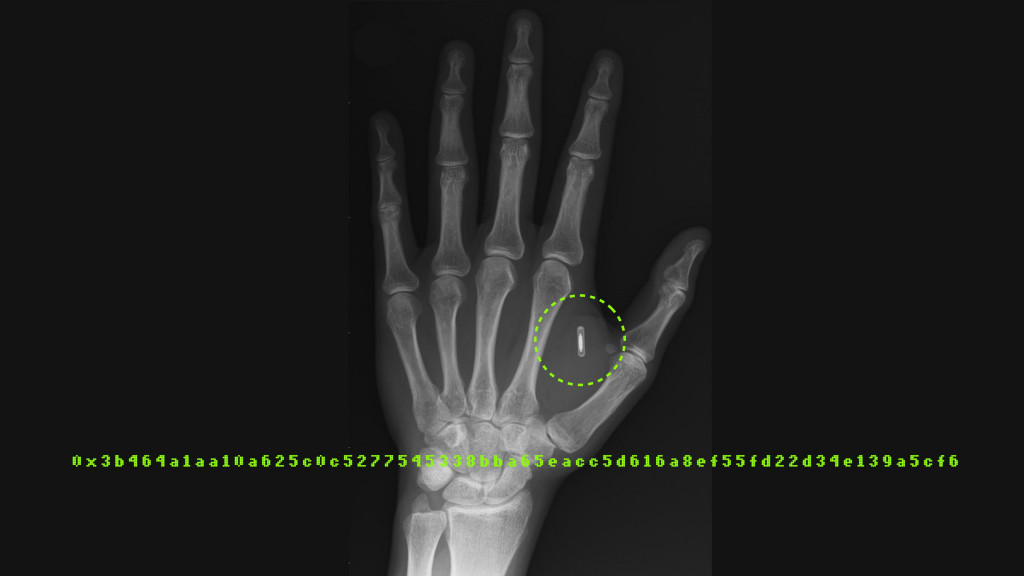
OOTMM You mentioned that your chip project is continuing. What does it look like over time? How do people interact with it?
KING As you know, the chip doesn’t actually collect data, but you can pair it with other devices, like Fitbits or Oura rings. I want to use a variety of wearables to collect different kinds of data and see how it develops. The work has become a much bigger project called (Network of) Self, after a book [The Network Self, 2019] by the philosopher Kathleen Wallace, who says that we consist of many different selves. With the wearables I can measure my physical self. At the moment I’m doing research on how to collect data on my emotional self. I want to collect a massive amount of data about my selves and put it into one package, and ultimately that will form a network of different modules.
It brings up questions of privacy and self-sovereign identity—who gets to monetize our data and what the value of it is. The artist On Kawara made these minimalist paintings with just a date, but behind each canvas there’s a little time capsule, with a newspaper clipping and some other record of the day. Buckminster Fuller’s Dymaxion Chronofile archives every bit of information from his life: bills, receipts from the supermarket, everything. So there is some precedent for doing this—I’m just using the newest tools to gather and store my information. The last module I’m supposed to create is a digital twin that can live on after I die. Let’s see what can be downloaded from my consciousness.
OOTMM That’s really cool. It’s almost like the logical extreme of projects like Beeple’s Everydays and Jonathan Mann’s Song a Day. But you’re gathering all the possible data about yourself.
KING I love how you’re using yours as well—how you’re putting elements of it everywhere and allowing people to interact with it.
OOTMM If you find me, or a sticker of my face, you can get the digital twin. There are five different Matt stickers out there, with an exponential rarity scheme. That part is totally arbitrary. Why is this one rarer than the other? Because I said so. But other parts are emergent. My roommate was the first person to scan my hand, just as a side effect of being my roommate. The conceptually interesting part comes from knowing what the encounter signals about someone’s identity. If you see this in someone’s wallet, you know that they’ve met me somewhere, and it’s timestamped because of the blockchain. You might be able to correlate that meeting with an Ethereum conference, for example. It tells you something about that person. That’s the whole idea of the many Matts, which of course plays off Matt being a very common name. My handle is @oneofthemanymatts. There are many Matts, and one of them can be in your wallet.
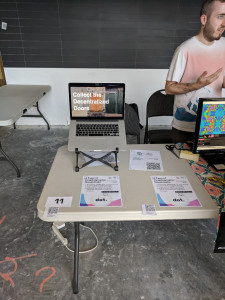
KING Did the handle come before the project or after?
OOTMM It came before the project, but just barely. I was just going by my full name, like an absolute normie, on Twitter. Then the phrase “one of the many Matts” popped into my head. I actually did this project first in 2018, but no one gave a shit. That year I had a table at an incredible event called the Internet Yami-Ichi—a sort of flea market for digital media. The person next to me was producing and selling rare gifs: they used generative art to produce a gif, and then without human eyes seeing it, they put it on a business card that you could buy. And when you scanned the thing on the business card, you got to see the gif for the first time. I thought that was so dope.
At the Yami-Ichi I put up pictures of doors that I took on my travels as collectible NFTs. As a joke about a “cryptographic handshake” I placed a gif of my hand on the chip in my hand, and let people collect it along with the doors. The only way to get that was to scan my hand. Some people scanned it, but no one actually redeemed the token on the blockchain. Only one person really played the game I had set up. They collected all the doors, which I thought was a cool sign of how the collector mindset could extend to digital objects. Anyway, it didn’t get much traction but I relaunched it last year as The Many Matts.
KING I love the simplicity of it, and that behind the simple interface there’s a lot of complexity. On Kawara had works beside the date paintings: I Met, I Went, and I Got Up. These were ways for him to document his life. He kept a running list of everyone he met. He’d draw daily maps to show where he walked through a city. He’d stamp a postcard every day with the time when he got up and send it to his gallery. So in a way you’re doing something similar when you leave stickers everywhere you go.
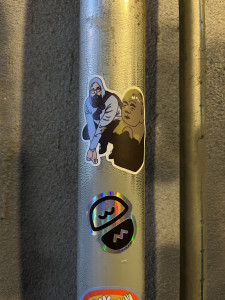
OOTMM It’s tokenizing these ephemeral moments. Recorded literally forever, until the heat death of the universe, or until Ethereum is deprecated. Not coming from an art history background, I’m learning so much all the time about questions that have been discussed for centuries. These patterns show up over and over and over again.
KING History doesn’t just repeat itself. It rhymes. I love that you’re doing this instinctively, but it has roots in art history. What do you think about the cyborg question? This is another topic that artists have been grappling with for some time, but it seems more pressing now as the technology becomes more accessible.
OOTMM Biohacking is radical relative to the baseline of norms, but it’s being normalized very quickly. You wear glasses, you use a phone. None of this is new. It just goes further than you’ve thought about going before. IUDs and pacemakers are normalized, but you and I are on the frontier here with chip implants. Probably 80 percent of people I meet have their minds blown.
KING The question is, do we want normalize it? Are we ready to become full-on cyborgs? If we are going to that stage, we should at least be conscious of how we’re doing it.
OOTMM You’re right. I wouldn’t want to let it happen to us. That seems like a road to a classic dystopia. When I first got my implant, I hadn’t done any tattoos. I hadn’t modified my body at all. My implant broke a psychological barrier. It felt like I had modified my aura. It was a very interesting barrier for me to break. And it will be huge on a collective level.
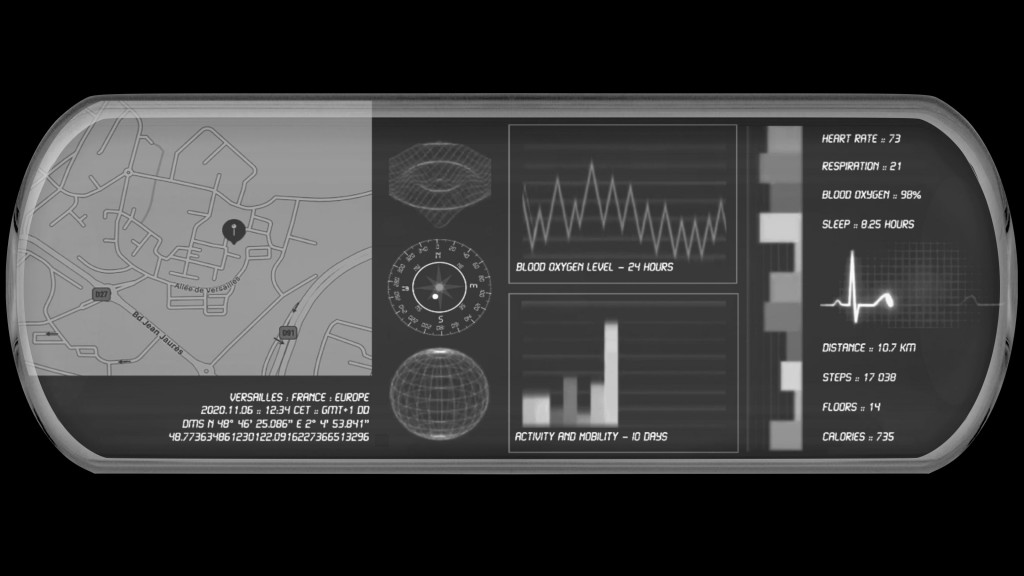
KING Absolutely. Another barrier is thinking about the self as a financial instrument. (Network of) Self is going to be tokenized and fractionalized. You’ll be able to buy a token called Self. In a way, people will be able to invest in my career. Last year, this work was included in a sale at Christie’s, the one right after Beeple. I pulled it from sale literally on the last day, because I wanted to develop it further. I’m glad that I did. Around that time, I met my friend Teddy Pahagbia, who goes by the name Mr. Metaverse. He was inspired by my work to create an application that will allow everyone to tokenize themselves. He believes that we’ll all eventually be paid through tokens of some sort—that’s how we will sell our time or sell the value of our time. It’s foreshadowing what’s coming. William Gibson, who coined the term “cyberspace” in his novel Neuromancer (1984), wrote another novel called Count Zero (1986) in which he predicted a stock market for art. And that’s exactly what has happened. I think it will extend beyond art to sports, celebrities, and so on.
OOTMM I worry about the explicitness of that future. We already invest in people via derivative mechanisms. For artists it’s their work. For athletes it’s memorabilia. But the explicit financialization of one’s life conflicts with my morals.
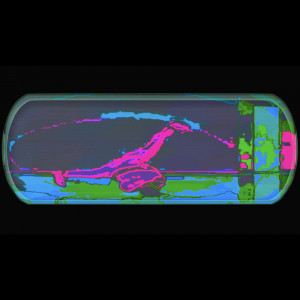
KING I share your view. Often people think that I am a proponent of transhumanism or a proponent of fractionizing the self. But going back to the sacrificial aspect, I do this to say: we might not want to go this way. It’s meant to raise questions. I’m making it a bit radical so that people might see the danger.
OOTMM One of my favorite quotes is from James Baldwin: “The artist must know, and must let us know, that there is nothing stable under heaven.” I have barriers when it comes to biohacking. I saw a contact chip that can overlay a screen onto your eye. It’s 200 by 200 pixels. You can put your heartbeat up there, get directions, and so on. But I don’t know if I want to filter the input to my eyes. Once you combine this with GANs and AI you’ll be able to take reality and filter it into whatever it is you want to perceive. You become a computer driven by an AI. That stuff worries me.
KING Exactly. A lot of my work is inspired by the writing of Jean Baudrillard, who speaks about hyperreality, a state in which we no longer can distinguish between the real and a simulation of the real. We’re now living in a time when people go to a concert or an event and watch it through their phones as they record it. We’re having the kind of filtered experience you described with the lens. How is that being stored in our minds compared to what we see directly, with our own eyes? That changes us. It absolutely changes us. So the question is, how much do we want to allow these emerging technologies to change the way we see the world?
—Moderated by Brian Droitcour
